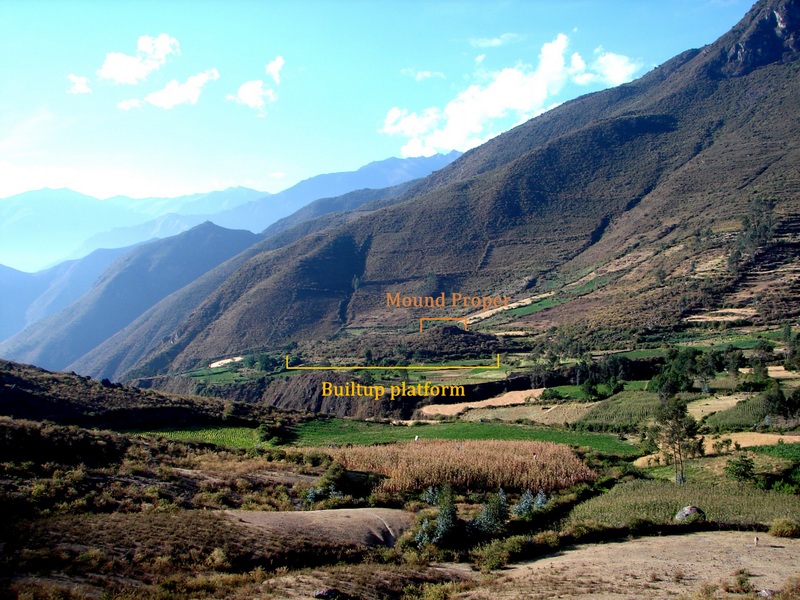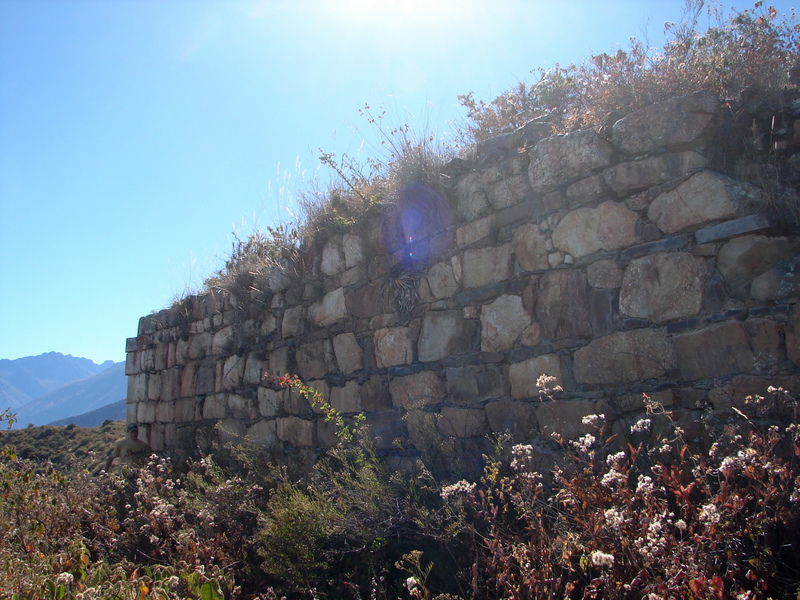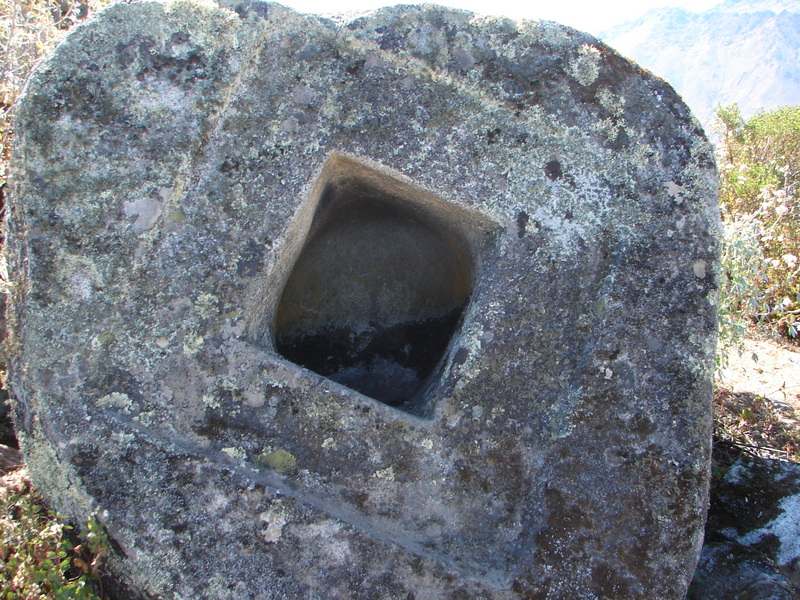It looks like you're using an Ad Blocker.
Please white-list or disable AboveTopSecret.com in your ad-blocking tool.
Thank you.
Some features of ATS will be disabled while you continue to use an ad-blocker.
10
share:
popular-archaeology.com has put up a very well written article about a new discovery in Cosma Peru, enjoy. (:

Photo illustrating the mound portion and the built-up platform. Photo credit Kimberly Munro.

Wall remains of Iglesia Hirca, the hilltop fortress. Photo credit Kimberly Munro.

Carved boulder at Caja Rumi. Photo credit Kimberly Munro.
source
Looking at the square hole I wondered if it was fitted to a shaft, possibly a millstone?

Photo illustrating the mound portion and the built-up platform. Photo credit Kimberly Munro.
At once both monumental and obscure, it stands within a visually serene yet ruggedly remote setting. Named after its nearby namesake village of Cosma, nestled in the upper Nepeña Valley of central Peru, it is a relatively unexplored complex that includes three human-made mounds thought by archaeologists to be nearly 3,000 years old. During the summer of 2014, it will become a destination for a small team of archaeologists and students who will, for the first time, begin serious archaeological excavations at the site.

Wall remains of Iglesia Hirca, the hilltop fortress. Photo credit Kimberly Munro.
On the way to Cosma with some of her archaeological crew to investigate the tip, one site in particular caught Munro’s eye. “There is no public transport up the mountain to the town of Cosma, so we had to hitch a ride with the delivery truck that goes up once a week with the community’s supplies,” she said. “We were riding up on the top of the truck and when it took that last bend in the road before Cosma, I caught a glimpse of Karecoto [the local name of a large mound] for the first time – and honestly couldn’t believe what I was seeing. I knew it wasn’t natural, or Inca, and its massive size and composition was reminiscent of [ancient Peruvian] highland centers. Even though we were in the upper reaches of the coastal valley, we were still in a coastal valley, and this was something different from what we had seen throughout the rest of Nepeña.”

Carved boulder at Caja Rumi. Photo credit Kimberly Munro.
source
Looking at the square hole I wondered if it was fitted to a shaft, possibly a millstone?
edit on 14-3-2014 by AlaskanDad because: sp
I love how all these ancient sites have stone in shapes that appear to give them a practical purpose. Like a cog or male and female connectors. A
plague on revisionist's houses!
I suppose they had to abandon this site when the taxes went through the roof and they couldn't make the house payment.
Nice find OP. It appears to be a lot of smaller stones, more recent than the big stones used in some areas. Almost looks like mortar of some kind was used long ago. It could also be a combination of newer and older ancient building as this seems to be seen a lot in some areas.
Nice find OP. It appears to be a lot of smaller stones, more recent than the big stones used in some areas. Almost looks like mortar of some kind was used long ago. It could also be a combination of newer and older ancient building as this seems to be seen a lot in some areas.
reply to post by rickymouse
I saw one pyramid in Peru, i think it's called Huaca Puclana; it's in the middle of the city of Lima. It's made with mudd briks that dry under the sun, because of the Andes they have almost no precipitation, so the buildings dont fall apart,
the huge pyramid is actualy made of dried mudd.
filer.livinginperu.com...
www.peruturismo.com...
I saw one pyramid in Peru, i think it's called Huaca Puclana; it's in the middle of the city of Lima. It's made with mudd briks that dry under the sun, because of the Andes they have almost no precipitation, so the buildings dont fall apart,
the huge pyramid is actualy made of dried mudd.
filer.livinginperu.com...
www.peruturismo.com...
edit on 8285231xu3201pm331 by Bitxushanty because: (no reason
given)
edit on 8285331x0000003901pm331 by Bitxushanty because: (no reason given)
new topics
-
Scary video of face in an abandoned house
Paranormal Studies: 1 hours ago -
Just Came Across These Unusual Old UFO Pics
Aliens and UFOs: 3 hours ago -
LA Mayor Bass Demanded $49M in Additional LAFD Cuts One Week Before Wildfires
Mainstream News: 5 hours ago -
Sepultura - Territory - With New Drummer Greyson Nekrutman
Music: 6 hours ago -
Carry On!
Short Stories: 6 hours ago
top topics
-
This should be plastered all over the airwaves
Mainstream News: 12 hours ago, 23 flags -
LA Mayor Bass Demanded $49M in Additional LAFD Cuts One Week Before Wildfires
Mainstream News: 5 hours ago, 17 flags -
Archbisop Vigano Warns of Deep State and Deep Church
New World Order: 14 hours ago, 16 flags -
Oh, Good Gosh. “Kremlin Warns Stay Away from Greenland.”
World War Three: 14 hours ago, 11 flags -
Just Came Across These Unusual Old UFO Pics
Aliens and UFOs: 3 hours ago, 4 flags -
Carry On!
Short Stories: 6 hours ago, 3 flags -
Sepultura - Territory - With New Drummer Greyson Nekrutman
Music: 6 hours ago, 2 flags -
Scary video of face in an abandoned house
Paranormal Studies: 1 hours ago, 2 flags
10
